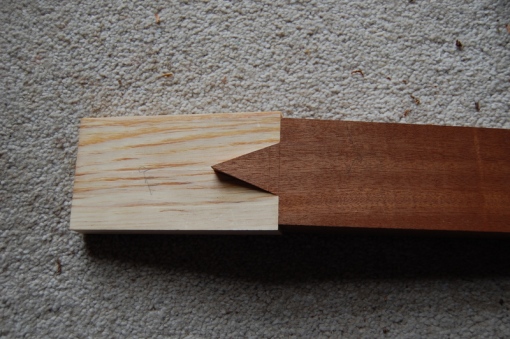Looking around for more on V-joints, I found Gary Demos’ site where he describes not only the construction of the joint but how he made a copy of a Panormo guitar. It’s a fine looking instrument and there are a few mp3 files that show that it sounds very good as well.
Cumpiano’s website has a brief discussion of the merits of the V-joint versus the scarf joint too. (You’ll need to scroll down a bit to find it.) I enjoyed his comment:
If you use a v-joint people will shower you with praises for your skill and those in the know will guess that you don’t have to make a living at making guitars.
There’s probably some truth in that. I’ve always admired Cumpiano’s down to earth approach to guitar making and his refusal to subscribe to anything that can’t be properly explained. See, for example, his courteous but uncompromising dismissal of the mystique of tap tone tuning.
Still, in the interests of historical accuracy, I’m going to pursue the V-joint a bit further. It seemed worth shaping the neck and headstock of my trial joint to get an idea of what it would look like on a finished instrument. In reality, it doesn’t look quite as good as the photographs suggest. At this resolution, glue lines, which in places are wider than they should be, don’t show up. But I’ve discovered two useful things: first, that the joint isn’t impossibly difficult to make and second, that it’s certainly strong enough.







